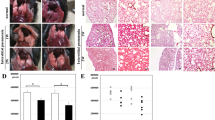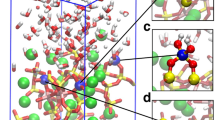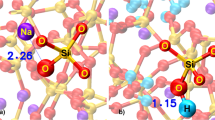Abstract
IN 1932, Kettle published experimental results which suggested that the fibrogenic activity of silica in silicosis is due to silicic acid formed when the inhaled dust dissolves in tissue fluids. Since that time, the dissolution of silica and mineral silicates in water and physiological fluids has been widely studied in laboratories concerned with pneumoconiosis research.
This is a preview of subscription content, access via your institution
Access options
Subscribe to this journal
Receive 51 print issues and online access
$199.00 per year
only $3.90 per issue
Buy this article
- Purchase on SpringerLink
- Instant access to full article PDF
Prices may be subject to local taxes which are calculated during checkout
Similar content being viewed by others
References
King, Occup. Med., 4, 26 (1947).
Lucas and Dolan, Canad. Med. Assoc. J., 40, 127 (1939).
Jötten and Pfefferkorn, Arch. Hyg., 137, 79 (1953).
Kitto and Patterson, J. Indust. Hyg. and Toxicol., 24, 59 (1942). Clelland and Ritchie, J. App. Chem., 2, 42 (1952). Nagelschmidt, Gordon and Griffin, Nature, 169, 538 (1952).
Heavens, Acta Cryst., 6, 571 (1953).
Author information
Authors and Affiliations
Rights and permissions
About this article
Cite this article
HOLT, P., KING, D. Solubility of Silica. Nature 175, 514–515 (1955). https://doi.org/10.1038/175514a0
Issue date:
DOI: https://doi.org/10.1038/175514a0



